Pet travel costs have exploded 50% since 2020. Airline pet fees now hit $150 per flight, while hotels charge up to $100 nightly just for your dog to sleep on the floor. A simple vacation with your pet can cost $1,000+ in fees before you even buy meals or activities.
These outrageous costs force 34 million pet owners to leave their beloved animals behind or skip trips entirely. But smart travelers have cracked the code. They’re using insider strategies to cut their pet travel expenses by 40-70% while getting better care and accommodation for their pets.
This guide reveals 23 proven methods that eliminate expensive pet travel fees, find free pet-friendly hotels, and slash veterinary travel costs – saving you thousands per year.
1. Crack the Elite Status Code for Free Pet Travel
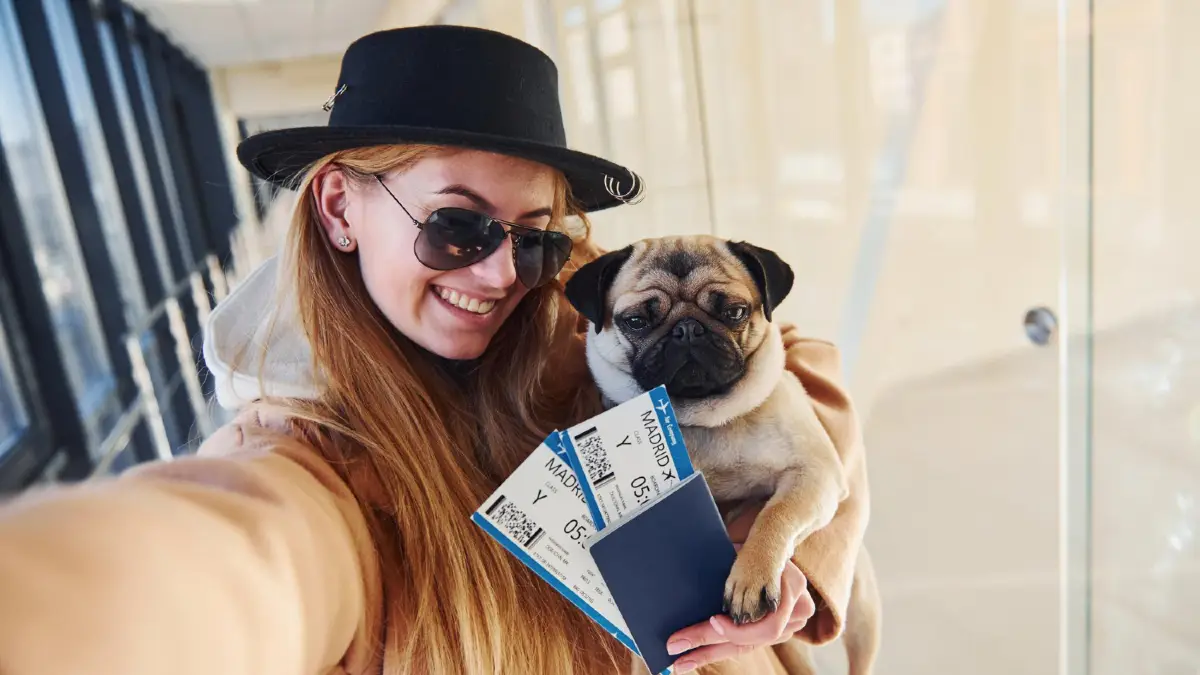
American Airlines Executive Platinum members fly their pets completely free. Zero dollars. This isn’t some hidden loophole – it’s an official perk that saves you $150 every single flight.
Here’s the math that will shock you: fly 100,000 miles per year and you’ll hit Executive Platinum status. That sounds like a lot, but business travelers hit this easily. Even if you’re not there yet, Platinum Pro members (75,000 miles) get massive discounts on airline pet fees.
Delta’s Diamond Medallion members get similar perks. United’s 1K status holders receive free pet transport on most routes. The airlines give these benefits to their best customers because they know pet owners are loyal travelers.
Your move: Check your current airline miles. If you’re close to elite status, concentrate all your flying with one carrier this year. The pet fee savings alone might pay for the extra flights needed to qualify.
2. Master Southwest’s Secret Pet Pass Program

Southwest doesn’t advertise this, but frequent flyers know about their unofficial “Pet Pass” program. Book multiple pet flights within 12 months and they’ll offer you $50 discounts on future bookings.
The trigger seems to be around your third pet booking. Customer service reps have discretion to apply these discounts when they see your history. Some travelers report getting $50 off after just two previous pet flights.
Southwest already charges some of the lowest airline pet fees at $95 per flight. Add the Pet Pass discount and you’re paying just $45 – less than half what American Airlines charges.
Pro tip: Always call Southwest directly to book pet travel. Their online system doesn’t show the pet availability accurately, and phone agents can apply discounts that don’t appear on the website.
3. Time Your Bookings Like an Airline Insider
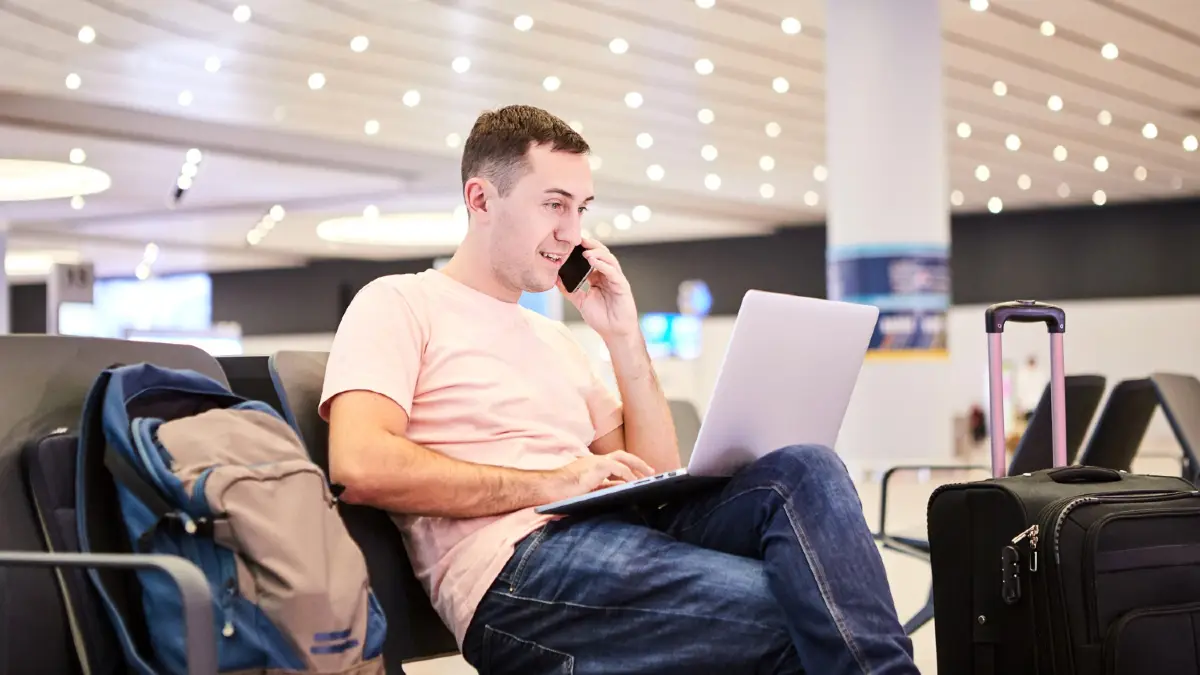
Domestic flights: Book exactly 39 days before departure for the lowest pet fees and best seat selection. Airlines release their pet inventory on this schedule, and early bookers get first choice of cabin space.
International flights: The sweet spot is 49+ days out. International pet cargo costs start at $435 and can hit $1,000+ for complex routes. But if you book early and keep your pet under 20 pounds, you’ll pay just $95-150 for cabin travel instead.
Tuesday and Wednesday departures cost 13% less on average than weekend flights. This applies to both your ticket and pet fees. A Wednesday flight that costs $95 for your pet might jump to $125 on Sunday for the exact same route.
The booking hack: Set price alerts for your route, but don’t wait for the human ticket to drop. Pet space is limited, and once it’s gone, you’re forced into expensive cargo options.
4. Keep Your Pet Under the Cargo Weight Limit
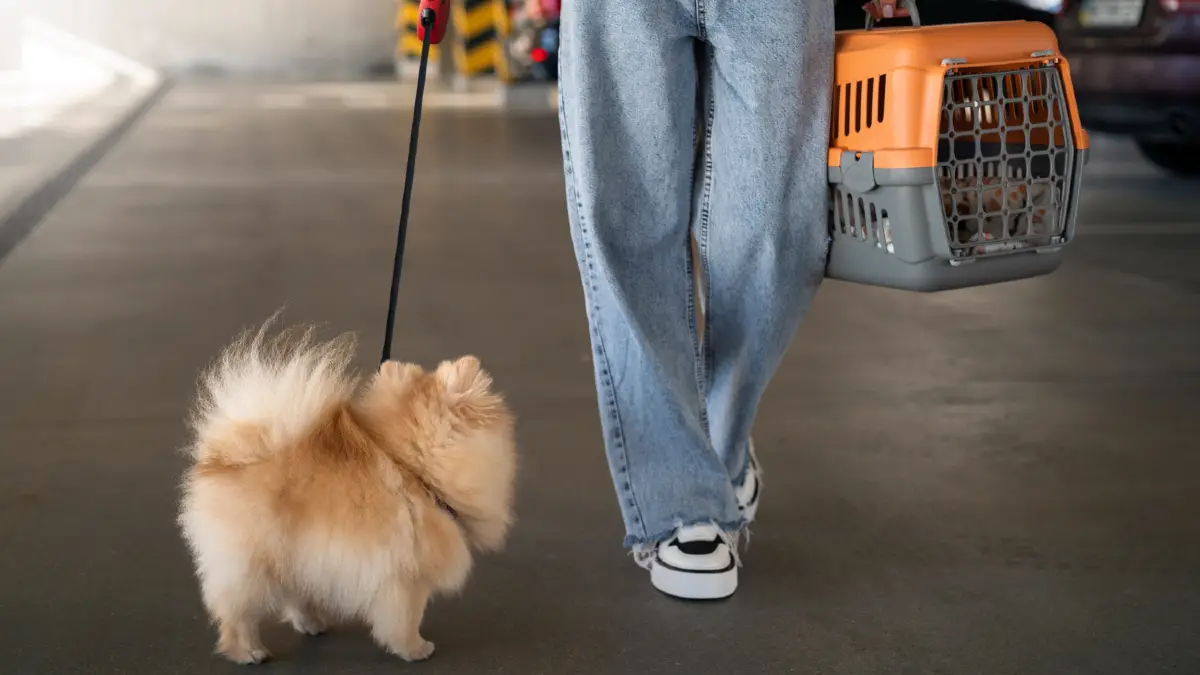
Here’s the weight limit that changes everything: 20 pounds total including your pet and carrier. Stay under this and you’ll pay $95-150 for cabin travel. Go over and you’re looking at $435+ for cargo plus the cost of an airline-approved crate.
Alaska Airlines offers the best deal at $100 for cabin pets. They’re also more flexible with carrier sizes than other airlines. American, Delta, and United all charge $125-150 for the same service.
Soft-sided carriers give you more space efficiency than hard cases. The airlines measure external dimensions, so every inch counts. A collapsible carrier that measures 18″ x 11″ x 11″ holds more than a hard case with the same outside measurements.
Weight-cutting tricks: Use the lightest carrier you can find (some weigh just 2-3 pounds). Skip heavy food and water bowls – collapsible silicone versions weigh almost nothing. Trim your pet’s nails and give them a bath before weighing to remove every possible ounce.
5. Choose Layover Flights for 22% Savings

Direct flights cost more for both you and your pet. Layover flights average 22% less than non-stop options, and this discount applies to pet fees too.
The catch: not all layovers work for pets. You need domestic connections where your pet stays on the same plane or you can easily transfer them. International connections often require quarantine holds that cost more than you save.
Best layover cities for pet travel: Denver, Dallas, and Atlanta have the most pet-friendly connection processes. These airports have dedicated pet relief areas and quick transfer systems.
Avoid these connection airports: Los Angeles, Miami, and New York have complex pet transfer rules that can add hours to your travel time and fees to your bill.
6. Compare Carriers Like Your Wallet Depends on It

Alaska Airlines: $100 per flight, best customer service for pet issues, most flexible sizing rules
Southwest: $95 per flight, Pet Pass discounts possible, simple booking process
JetBlue: $125 per flight, BUT free in Mint Business Class (new 2024 policy)
American: $150 per flight, free for Executive Platinum members, strictest weight enforcement
Delta: $95-125 depending on route, free for Diamond members, good international options
United: $150 per flight, free for 1K members, most expensive overall
Budget carriers like Spirit and Frontier don’t allow pets in cabin on most routes. You’ll pay cargo costs that start at $435 – more than three times the major carrier cabin fees.
The bottom line: Alaska Airlines and Southwest offer the best value for most travelers. If you’re chasing elite status, American and Delta provide the biggest long-term savings through their top-tier benefits.
Your airline pet fees don’t have to break your budget. Start with method one – check your elite status progress – then book your next trip using methods three and four for immediate savings. These six strategies can cut your airline pet costs by 40-60% starting with your very next flight.
7. Red Roof Inn’s Hidden Discount Code

Red Roof Inn doesn’t charge pet fees at any of their 600+ locations nationwide. Zero dollars for your pet to stay. But here’s the insider trick most travelers miss: use promo code 604673 when booking and you’ll save an additional 10-15% on your entire room rate.
This code isn’t advertised anywhere obvious. Customer service reps know about it, but you have to ask. The discount applies to the base room rate, not just pet fees, so you’re saving money even beyond the free pet accommodation.
Red Roof Inn properties are clean, basic hotels that focus on value over luxury. They’re perfect for road trips and overnight stops. The rooms include free WiFi, and many locations offer free breakfast. Your pet gets to stay free while you pay 15% less than their regular rates.
Booking tip: Call the hotel directly and mention code 604673. Online booking systems don’t always apply the discount correctly, but front desk staff can add it manually.
8. Kimpton Hotels’ Full Pet Treatment
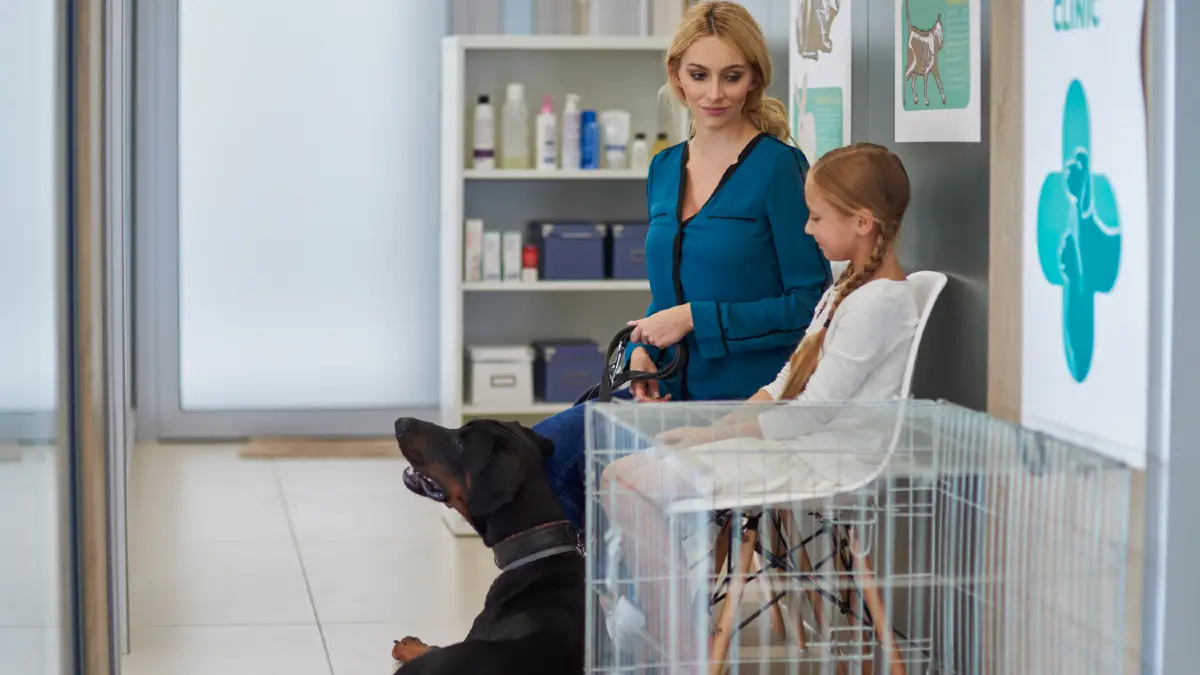
Kimpton Hotels take free pet accommodation to another level. No pet fees, no weight limits, no breed restrictions. They welcome cats, dogs, rabbits, birds, and most other pets without charging extra.
But the real value is in their pet amenities package. Every Kimpton property provides pet beds, food bowls, and treats at check-in. Many locations host “yappy hour” receptions where pets and owners can socialize. Some properties have on-site pet spas and dog-walking services.
Kimpton operates boutique hotels in major cities like San Francisco, Chicago, and New York. These aren’t budget properties – room rates typically run $200-400 per night. But when other luxury hotels charge $75-100 pet fees, Kimpton’s zero-fee policy saves you money while providing better pet services.
The math: A three-night stay at a competing luxury hotel with $75 pet fees costs you $225 extra. That money covers a nicer room or better meals at Kimpton instead.
9. Virgin Hotels and Element Hotels’ Smart Policies

Virgin Hotels launched their pet program in 2024 with a simple rule: no pet fees, period. Their properties in Las Vegas, San Francisco, and other major cities welcome pets up to 40 pounds without restrictions.
Virgin’s rooms are designed for modern travelers. They include separate living and sleeping areas, so your pet has space to move around. The hotels provide pet beds and bowls on request. Some locations have rooftop dog runs where your pet can exercise without leaving the building.
Element Hotels (part of the Westin brand) run their “Love That Dog” program. Dogs under 40 pounds stay free at all Element properties. The hotels cater to extended-stay travelers, so they include full kitchens and separate work areas. Your pet gets a comfortable space while you save on restaurant meals by cooking in your room.
Best Element locations for pet travelers: Austin, Boston, and Denver have large outdoor areas and nearby dog parks. The hotels provide local pet service directories and walking maps.
10. Calculate Your Real Savings vs Traditional Chains

Here’s how zero-fee hotel chains stack up against traditional pet-friendly hotels:
Marriott: $75-100 per night pet fee at most properties Hilton: $50-75 per night, varies by location
Hyatt: $50-100 per night, some properties charge more Holiday Inn: $25-50 per night, depends on franchise owner
Your weekly savings breakdown:
- Budget hotels: $175-350 saved (7 nights × $25-50 fees)
- Mid-range hotels: $350-525 saved (7 nights × $50-75 fees)
- Luxury hotels: $525-700 saved (7 nights × $75-100 fees)
These numbers add up fast for longer trips. A two-week vacation saves you $350-1,400 just by choosing zero-fee chains. That’s money you can spend on activities, better meals, or extending your trip.
The complete zero-fee hotel list:
- Red Roof Inn: 600+ locations, promo code 604673 for extra savings
- Kimpton Hotels: Full amenities, no restrictions, boutique style
- Virgin Hotels: Modern rooms, up to 40 pounds, major cities
- Element Hotels: Extended stay focus, kitchens included, under 40 pounds
- Aloft Hotels: Select locations, trendy properties, check individual policies
- La Quinta Inn: Most locations, basic accommodations, reliable option
Your booking strategy: Start by searching these chains for your destination. Book directly with the hotel when possible – their websites often show pet policies more clearly than third-party booking sites. Call ahead to confirm pet policies haven’t changed, especially during busy travel seasons.
The hotel industry makes billions from pet fees, but these forward-thinking chains prove you don’t have to pay them. Your next trip can include comfortable, pet-friendly hotels without the extra charges that drain your travel budget.
11. Build Your Free Pet Care Network

Your cheapest pet sitting costs nothing. Start with family, friends, and neighbors who love animals. Many pet owners create informal pet care co-ops where they trade sitting services throughout the year.
Here’s how the trading system works: you watch their golden retriever for a weekend, and they take your cat for a week when you go on vacation. No money changes hands, but both pets get one-on-one attention instead of sitting in boarding facility cages.
Setting up your pet care co-op:
- Find 3-4 other pet owners in your area
- Exchange emergency contact info and vet details
- Start with short test sits (one night) to build trust
- Keep a simple log of who owes what to stay fair
The key is starting small. Watch a neighbor’s dog for one evening before asking them to take your pet for a full week. Most people are happy to help once they see you’re reliable and their pet comes home happy.
Community resources: Check local Facebook groups, Nextdoor apps, and community centers for pet owner groups. Many neighborhoods have informal pet sitting exchanges that save everyone money.
12. Use Rover to Cut Boarding Costs by 70%
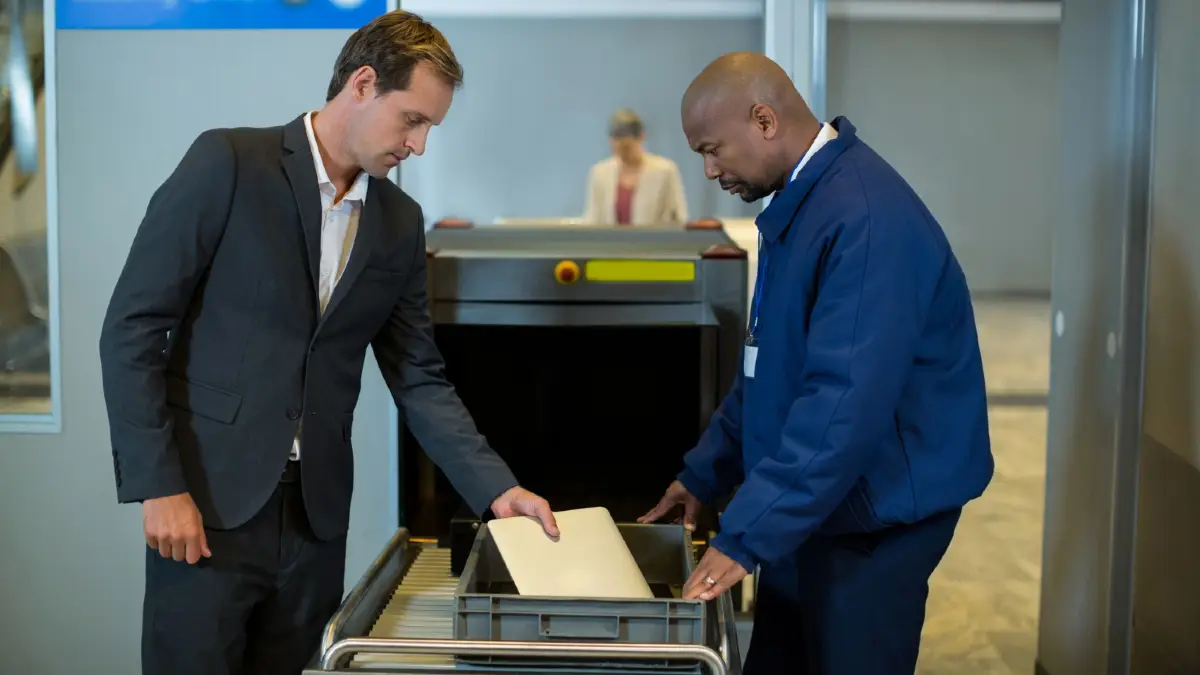
Rover connects you with local pet sitters who charge an average of $40 per day – half what traditional boarding facilities cost. The platform has 95% of services rated 5 stars, so you’re getting better care for less money.
Traditional boarding facilities pack multiple animals into small spaces. Rover sitters usually take just 1-2 pets at a time, giving your animal personal attention and a home environment instead of a kennel cage.
Rover vs Wag cost breakdown:
- Rover: Takes 20% commission, so sitters keep 80% of your payment
- Wag: Takes 40% commission, forcing sitters to charge more to make money
This difference matters because Rover sitters can afford to charge less while still earning decent money. Wag’s higher fees get passed on to you as higher pet sitting costs.
Platform comparison for overnight sitting:
- Traditional boarding: $40-110 per night
- Rover average: $40 per night
- Wag average: $55 per night
- Local independent sitters: $30-45 per night
Rover also includes $25,000 veterinary coverage if something goes wrong during your pet’s stay. Traditional boarding facilities often make you sign waivers that leave you responsible for all vet bills.
13. Vet Local Sitters Like a Pro
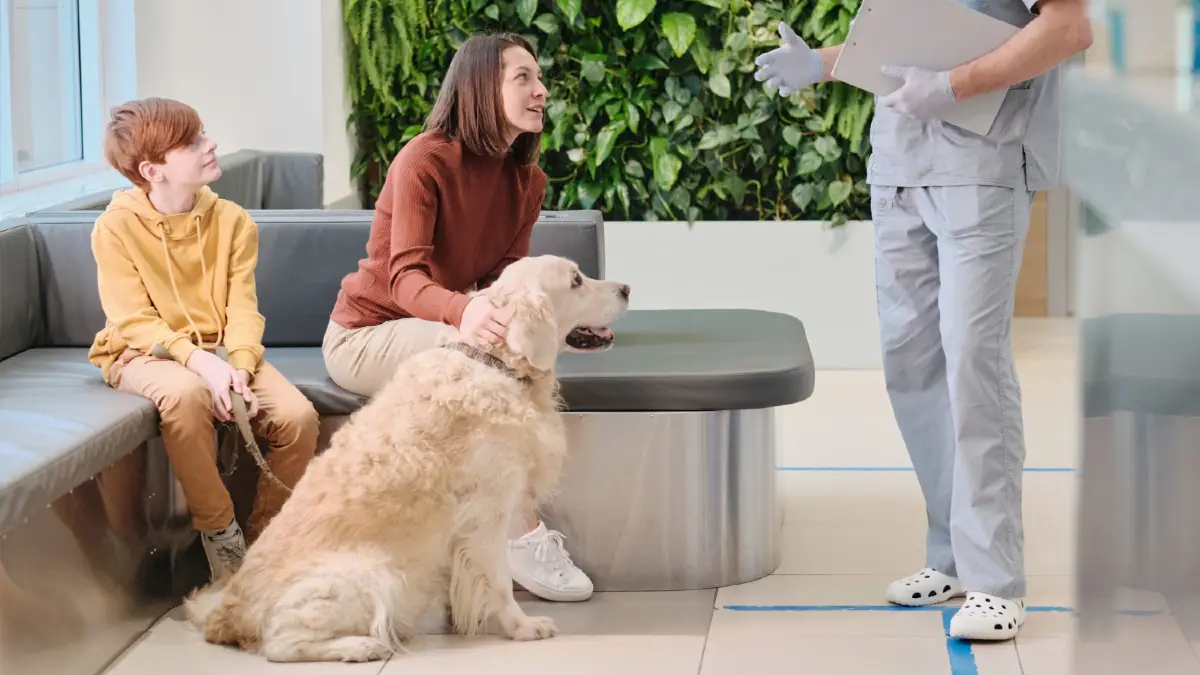
Finding cheap pet boarding isn’t worth it if the sitter doesn’t take good care of your animal. Here’s how to find reliable local sitters without overpaying:
Your 5-step vetting process:
- Meet in person before booking any overnight stays
- Check references from at least 2 other pet owners
- Start with short visits – try a 4-hour test run first
- Visit their home if your pet will stay there
- Trust your instincts – if something feels off, find someone else
Red flags that cost you money later:
- Sitters who won’t meet beforehand (usually unreliable)
- No references from other pet owners (might be inexperienced)
- Prices way below market rates (often too good to be true)
- Won’t let you see where your pet will stay (hiding poor conditions)
Questions that save you headaches:
- How many other pets will be there during your stay?
- What’s your backup plan if my pet gets sick?
- Can you send photo updates during longer stays?
- Do you have experience with my pet’s breed or special needs?
Local sitter hunting spots:
- Neighborhood Facebook groups and Nextdoor posts
- Vet office bulletin boards (often have business cards)
- Dog parks (talk to other owners about who they use)
- Pet supply stores (many have sitter referral boards)
The best alternative pet care combines cost savings with better attention for your animal. Start by building your free network, then use Rover for times when friends aren’t available. Your pet gets personalized care while you save hundreds compared to traditional boarding facilities.
14. TrustedHousesitters Pays for Itself in One Trip

TrustedHousesitters charges $129-199 per year depending on your membership level. That sounds expensive until you do the math. Members report saving $3,000-10,000 annually by getting free accommodation while caring for other people’s pets.
Here’s how it works: pet owners post their homes when they travel, and you apply to house-sit for free accommodation. You get a beautiful home to stay in, often with amenities like pools, gardens, and full kitchens. The pets get one-on-one care instead of boarding facility stress.
Your break-even calculation:
- Basic membership: $129 per year
- Average hotel savings: $100-300 per night
- Break-even point: 1-3 nights of house sitting
Everything after your first successful sit is pure savings. One week of house sitting saves you $700-2,100 in hotel costs while giving the homeowner’s pets personalized care.
Real member success story: Sarah from Denver joined TrustedHousesitters in 2024 and completed 8 house sits. She saved $6,400 in hotel costs while caring for dogs, cats, and even chickens across Colorado, Utah, and Arizona. Her annual membership paid for itself after just her second sit.
Platform features that save you money:
- Verified member profiles reduce safety concerns
- 24/7 emergency support if problems arise
- Property damage coverage up to $1 million
- Access to last-minute sits for spontaneous travel
15. HomeExchange Creates Long-Term Free Accommodation
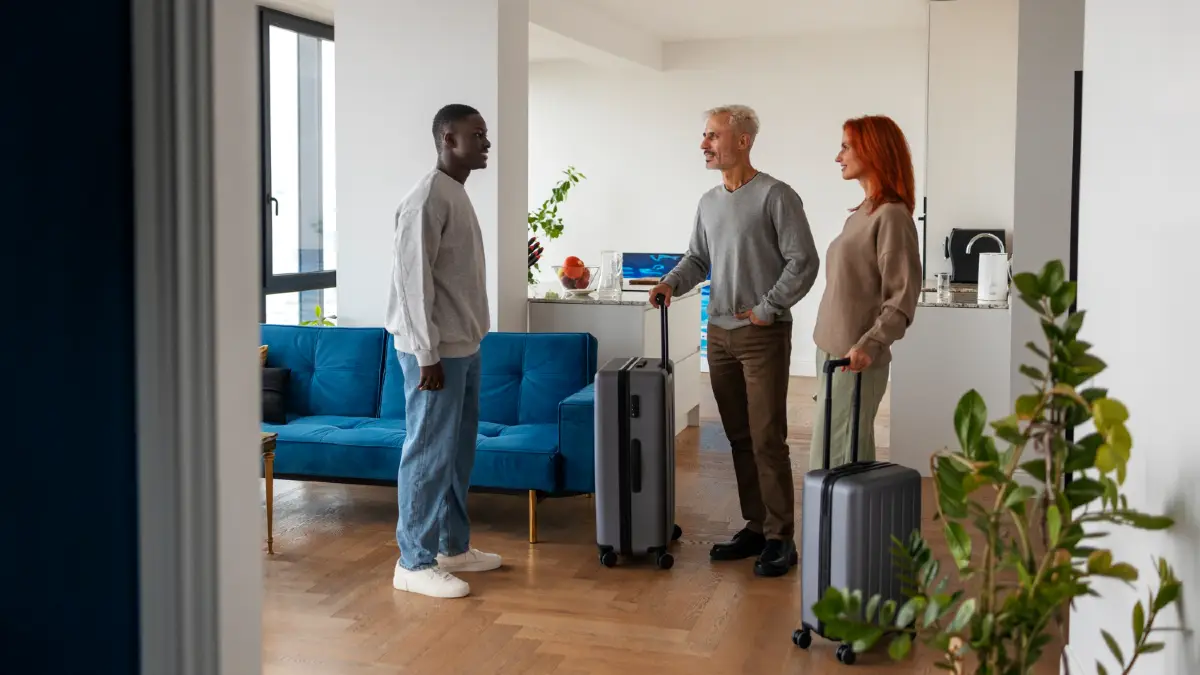
HomeExchange works differently but delivers similar savings. You pay $235 annually and swap homes with other members instead of house-sitting. Both families get free accommodation while trading houses and often pet care responsibilities.
This works especially well for families who travel regularly. You build relationships with other members and create ongoing home swap arrangements. Many members trade the same houses year after year, creating reliable vacation spots without hotel costs.
HomeExchange advantages:
- Your pets stay in your own home with the visiting family
- You get to use someone else’s home like it’s yours
- No pet boarding costs because animals stay home
- Access to homes in expensive destinations for free
Platform comparison for pet care exchange:
- HomeExchange: $235/year, reciprocal home swaps, pets often included
- Love Home Swap: $200/year, smaller network, fewer pet-friendly options
- Guest to Guest: $99/year, budget option but limited pet accommodations
The key advantage is that your pets never leave home. The visiting family cares for your animals while you care for theirs. Both families save on boarding costs and hotel fees.
16. Calculate Your Real Return on Investment

Smart travelers track their savings to see if these platforms deliver value. Here’s the math that shows why memberships pay off:
Average costs you avoid:
- Hotel room: $100-300 per night
- Pet boarding: $40-110 per night
- Pet-friendly hotel fees: $20-100 per night
- Total daily savings: $160-510
Break-even examples:
- TrustedHousesitters ($129): 1-3 nights of house sitting
- HomeExchange ($235): 1-2 home swaps per year
- Both platforms: Any trip longer than 2-3 nights creates positive ROI
Annual savings potential:
- Light travelers (2-3 trips): $800-2,500 saved
- Regular travelers (4-6 trips): $2,500-6,000 saved
- Frequent travelers (7+ trips): $5,000-10,000+ saved
Member testimonial: “We joined HomeExchange in 2023 and completed 6 home swaps. We saved over $8,000 in hotel costs while our dogs stayed home with caring families. The membership paid for itself 34 times over.” – Mike and Lisa, Phoenix
Success factors that maximize your savings:
- Complete your profile with great photos and detailed pet experience
- Apply quickly to popular listings (competition can be fierce)
- Be flexible with dates to access more opportunities
- Start with shorter sits to build positive reviews
- Communicate clearly about pet care expectations
Platform selection guide:
- Choose TrustedHousesitters if you want more flexibility and don’t mind not having your own space
- Pick HomeExchange if you prefer swapping homes and want your pets to stay comfortable at home
- Consider both if you travel frequently – different platforms work better for different trips
House sitting pets and pet care exchange eliminate your two biggest travel expenses simultaneously. The membership fees seem high upfront, but they pay for themselves faster than almost any other travel investment. Your first successful arrangement typically saves more money than years of membership costs.
17. Shop USDA-Accredited Vets Like Your Budget Depends on It
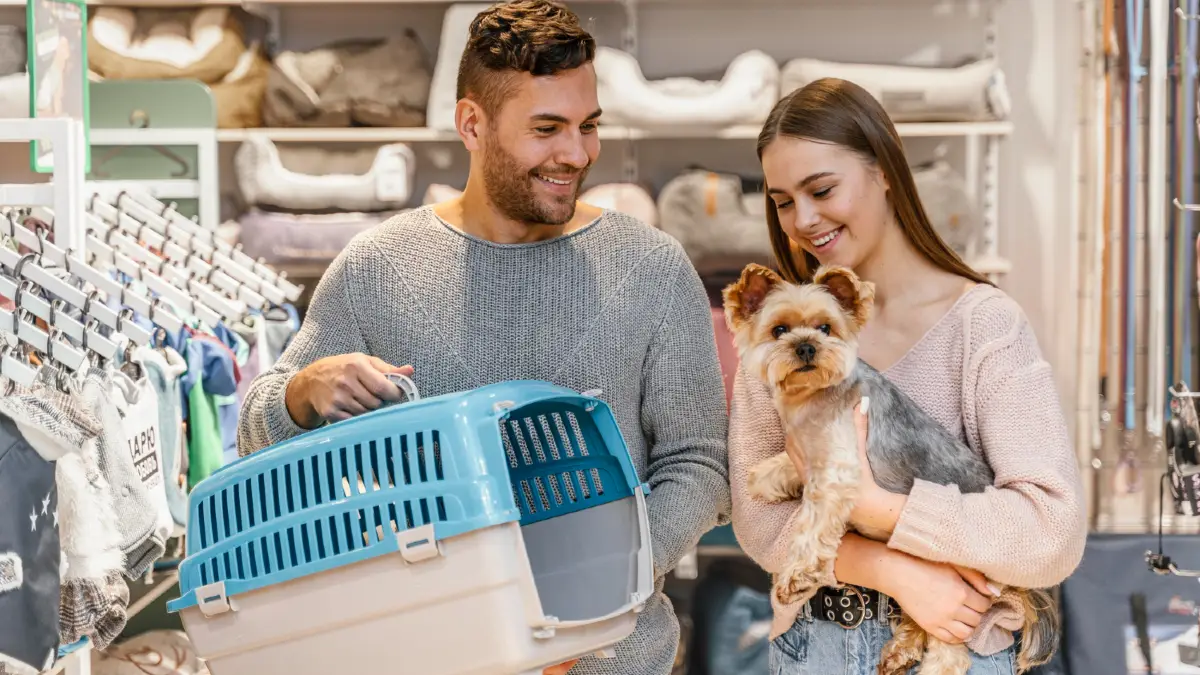
Not all vets can sign international travel documents. Only USDA-accredited veterinarians can issue the health certificates you need for most international destinations. But these accredited vets charge wildly different prices for the same service.
Real price examples from 2025:
- Downtown Los Angeles clinic: $750 for basic health certificate
- Suburban Phoenix vet: $425 for identical service
- Rural Texas practice: $200 for same paperwork
- Mobile vet service: $350 plus travel fee
The expensive clinics aren’t necessarily better. They’re often just located in high-rent areas or cater to wealthy clients. The $200 rural vet provides the same USDA-approved documentation that costs $750 in Beverly Hills.
Your vet shopping strategy:
- Search the USDA APHIS website for accredited vets in your area
- Call at least 5 clinics for price quotes before booking
- Ask about package deals if you have multiple pets
- Consider driving 30-60 minutes for major savings
Money-saving phone script: “I need an international health certificate for my dog. What’s your total cost including the exam, certificate, and any processing fees?” Don’t let them quote just the certificate cost – many clinics add surprise fees at checkout.
18. Time Your Health Certificates with Regular Checkups

Health certificates stay valid for 30 days from the date of issue. Smart pet owners combine their travel documentation with routine veterinary care to avoid paying for separate appointments.
Strategic timing saves you money:
- Schedule annual vaccines during your certificate appointment
- Get heartworm tests done at the same visit
- Combine multiple pets’ checkups on the same day
- Plan certificate dates to cover round-trip travel
Example cost savings: A regular checkup costs $75-125. A separate health certificate visit runs $200-400. Combining them saves you the base appointment fee and travel time for a second visit.
The CDC changed international dog import rules in August 2024, making this timing strategy even more valuable. Dogs now need microchips and specific documentation, but the new system is actually simpler than before for most travelers.
19. Bundle Multiple Pets for 30% Savings

Veterinary travel costs drop dramatically when you travel with multiple pets. Most accredited vets offer significant discounts for additional animals during the same appointment.
Typical bundling savings:
- First pet: $400 for complete health certificate package
- Second pet: $280 (30% discount)
- Third pet: $250 (35% discount)
- Total savings: $270 compared to separate appointments
This works because the vet’s time for reviewing requirements and filling out paperwork gets spread across multiple animals. The physical exams are quick, but the documentation takes the same time whether it’s for one pet or three.
New 2025 CDC regulations make bundling easier:
- All dogs need microchips (one-time cost, not per-trip)
- Health certificates use simplified forms
- Six-month validity for CDC paperwork (not the 30-day health certificate)
- Multiple entry allowances reduce repeat documentation
Bundling strategy for single pet owners: Partner with friends or family who also need health certificates. Many vets will provide group discounts even for pets from different families if they’re seen the same day.
Document preparation prevents costly mistakes:
- Download forms from the USDA APHIS website before your appointment
- Research your destination’s specific requirements (not all countries need the same paperwork)
- Bring your pet’s complete vaccination history
- Have your microchip registration information ready
Common mistakes that cost extra money:
- Waiting until the last minute (forces you to pay premium rush fees)
- Not researching destination requirements (leads to rejected paperwork)
- Choosing the wrong type of health certificate (different forms for different countries)
- Forgetting vaccination records (causes delays and repeat visits)
Pro tip for frequent travelers: Build a relationship with one USDA-accredited vet who learns your travel patterns. They can time your pet’s routine care to align with your certificate needs and often provide loyalty discounts for repeat customers.
Your pet health certificate cost doesn’t have to drain your travel budget. Shopping around saves you $200-500 per trip, while strategic timing and bundling can cut your total veterinary travel costs by 30-50%. These savings add up fast for families who travel internationally with pets multiple times per year.
20. Choose Multi-Purpose Gear That Does Double Duty

The expensive pet stores want you to buy separate items for every travel need. Smart travelers buy one item that solves multiple problems. This cuts your cheap pet travel gear costs in half while reducing what you need to pack.
Multi-purpose items that save money:
- Collapsible bowls work for food and water ($8-15 vs $30+ for separate bowls)
- Travel blankets double as car seat covers and hotel bed protection ($12-20 vs buying both separately)
- Retractable leashes with waste bag dispensers eliminate carrying extra accessories ($15-25 vs $40+ for separate items)
- Soft carriers with removable padding work as car seats and airline carriers ($35-50 vs $80+ for specialized versions)
The math that matters: A basic travel setup with separate items costs $180-250. The same functionality with multi-purpose gear runs $75-125. You save $105-125 while getting equipment that’s easier to pack and carry.
21. Hunt Used Markets for 40-70% Savings
Pet travel equipment barely wears out because most families use it just a few times per year. Used gear markets offer nearly new items at massive discounts, and you can often find premium brands for less than basic new equipment costs.
Best places to find used pet travel equipment:
- Facebook Marketplace (search “pet carrier” in your area)
- Craigslist pet supply sections
- Garage sales in pet-friendly neighborhoods
- Consignment pet stores
- Online groups for specific dog breeds (members often sell outgrown carriers)
Used vs new price comparisons:
- Sherpa Original carrier: $120 new vs $45-65 used
- Petmate Sky Kennel: $85 new vs $30-45 used
- Generic soft carriers: $60 new vs $20-35 used
Used buying safety checklist:
- Check zippers work smoothly (replacements cost more than the savings)
- Verify airline size compliance with official measurements
- Look for cracks in hard carriers (safety issue, not worth the risk)
- Make sure all buckles and snaps function properly
22. Build DIY Carriers for Under $25

Creative pet owners make airline-approved carriers for a fraction of retail prices. This works best for small pets under 15 pounds, where size and weight matter more than durability.
DIY soft carrier from gym bag: Buy a basic duffel bag ($15-20) and add mesh panels ($5-8) from fabric stores. Total cost under $25 vs $60+ for similar commercial carriers. Make sure your final dimensions meet airline requirements before your first flight.
Airline size requirements to match:
- Most airlines: 18″ x 11″ x 11″ maximum external dimensions
- Southwest: Slightly more flexible, up to 18.5″ x 13.5″ x 9.5″
- International flights: Often stricter, check specific airline policies
DIY modification tips:
- Use aquarium-grade mesh for better airflow than cheap alternatives
- Add snap-on water bottle holders using hardware store parts
- Reinforce handles with extra stitching (carriers fail at stress points)
When DIY doesn’t work: Skip homemade solutions for dogs over 20 pounds, international travel with complex requirements, or if you’re not comfortable with basic sewing. The safety risk isn’t worth the savings for larger animals or complicated trips.
23. Time Your Shopping for Maximum Savings

Pet travel equipment follows predictable sale cycles. Knowing when to buy cuts your pet carrier costs and other gear expenses by an additional 20-40% beyond other savings strategies.
Best times to buy cheap pet travel gear:
- January clearance: Post-holiday sales clear inventory at 30-50% off
- Back-to-school season: August-September sales target college students with pets
- Black Friday: Online retailers offer deep discounts on pet supplies
- End of summer: Travel gear gets marked down as vacation season ends
Loyalty program stacking: Sign up for Petco, PetSmart, and Chewy rewards programs. Use their price-match policies against each other, then apply loyalty discounts on top. This combination saves an extra 10-15% beyond sale prices.
Shopping strategy that maximizes savings:
- Set price alerts on key items during off-season
- Buy quality used gear first, then fill gaps with new sales items
- Stock up during major sales for future trips
- Join breed-specific Facebook groups where members sell outgrown equipment
Your pet travel equipment budget doesn’t need to break the bank. Used markets, multi-purpose items, and strategic timing can cut your gear costs by 60-70% while still getting everything your pet needs for safe, comfortable travel.
